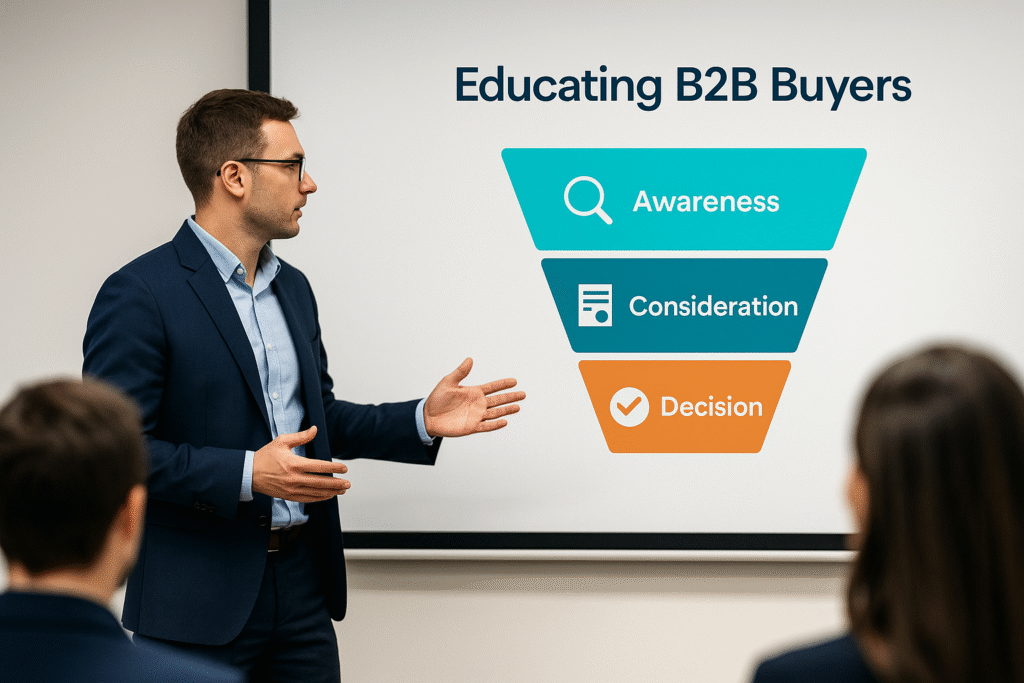About the Company
The client is a fast-scaling SaaS provider specializing in advanced data analytics solutions for Fortune 1000 enterprises across finance, retail, and healthcare. Positioned as a challenger brand against well-funded global incumbents, the company differentiated itself with innovative analytics platforms but lacked the marketing visibility to match its product strength. With enterprise buyers increasingly relying on digital research and thought-leadership content before engaging vendors, the firm’s success depended on building trust and discoverability through a strong digital content strategy. Their leadership team recognized that content performance would directly influence credibility, inbound lead velocity, and market share growth.
Their primary goal was to uncover why a $3M annual content investment was underperforming and restructure it into a growth engine aligned with enterprise buyer needs.
The Challenges
The client’s content library had grown rapidly but without a cohesive strategy. Assets overlapped in topic, left critical gaps in buyer education, and failed to align with decision-makers’ expectations. Metrics showed stagnation: content was published consistently but engagement and conversions lagged. Digiwigy identified three major challenges that highlighted the need for a strategic audit and gap analysis.
Overlapping and Underperforming Assets
The company’s content library was bloated with repetitive blogs and outdated whitepapers. Multiple assets targeted the same keywords, cannibalizing rankings. Content was often tactical, offering little executive insight. This diluted discoverability and credibility, leaving prospects unconvinced about the firm’s authority in data analytics.
Gaps in Buyer Journey Coverage
Critical buyer personas, especially CFOs and CIOs, had little tailored content. Early-stage content existed, but mid- and late-funnel materials were missing. Decision-makers lacked ROI calculators, case studies, or competitive comparisons. This gap left sales teams unable to nurture prospects effectively or accelerate stalled opportunities.
Misalignment with Executive Priorities
Content often focused on features and technical jargon rather than business outcomes. Senior executives could not see the connection to revenue impact, scalability, or risk reduction. Without executive-ready narratives, content failed to resonate at the decision-making level, creating disconnects between marketing activity and pipeline performance.
Content inefficiencies were eroding ROI, leaving millions in pipeline potential unrealized.
How did Digiwigy help?
Digiwigy conducted a structured, data-driven content audit to separate high-value assets from underperforming noise. Using analytics, competitor benchmarks, and persona mapping, we identified gaps, restructured narratives, and prioritized content that directly influenced buyer progression. The audit provided a roadmap that realigned content production with measurable business outcomes.
Comprehensive Content Performance Audit
We assessed 400+ assets across formats, evaluating performance through metrics like engagement time, rankings, and conversion rates. Duplicate or cannibalizing pieces were consolidated, while outdated assets were either refreshed or retired. We benchmarked the library against competitors to identify missed opportunities in emerging topics. A persona-based mapping revealed weak coverage for CFO and CIO audiences. This audit created clarity on what to keep, cut, or create. The result was a leaner, sharper content ecosystem optimized for visibility, authority, and conversion impact, saving the client both time and wasted budget on low-yield production.
Gap Analysis & Strategic Content Roadmap
The audit fed into a detailed gap analysis, mapping missing assets to each funnel stage and persona. We prioritized creation of ROI-driven whitepapers, sector-specific case studies, and executive dashboards to strengthen mid- and late-funnel engagement. Narrative restructuring ensured all new assets spoke to business outcomes, not technical features. An editorial calendar aligned content with quarterly business goals, creating cadence and accountability. The roadmap also included governance guidelines, analytics dashboards, and persona-driven templates to ensure sustainable growth. By aligning content supply with demand signals, the company built a measurable, repeatable engine for engagement and revenue influence.
The Results
increase in lead-to-MQL conversions
improvement in organic visibility of high-value content
reduction in content production costs by eliminating duplicates
$6.2M in pipeline influenced within 9 months.
42% increase in mid-funnel content downloads.
33% increase in keyword rankings for high-intent topics.
2.1x more engagement on ROI-focused whitepapers.
28% higher C-Suite engagement with refreshed assets.
Improved sales efficiency with better-aligned content libraries.
Governance framework reduced wasted production cycles.
The Key Takeaways
A content audit isn’t about cutting content—it’s about uncovering where investment actually drives growth. By auditing, benchmarking, and filling persona-specific gaps, enterprises can ensure content works as a measurable growth lever. For SaaS companies in competitive markets, this discipline converts wasted effort into predictable pipeline results.
Audits reveal hidden inefficiencies.
Bloated content libraries often mask cannibalization, redundancy, and outdated narratives. Audits separate high-value assets from noise, ensuring resources are focused on content that actually resonates with buyers. This shift maximizes ROI on content spend and strengthens brand authority in competitive landscapes.
Gap analysis strengthens buyer journeys.
Without mid- and late-funnel content, buyers stall. Gap analysis highlights missing proof points and executive narratives, enabling content to support progression from awareness to decision. When gaps are filled strategically, lead-to-MQL and MQL-to-SQL conversions improve significantly, shortening the path to revenue.
Executive alignment drives ROI.
C-Suite buyers don’t engage with technical features; they care about outcomes. Content audits reveal where messaging fails to connect with executive priorities. Realignment toward ROI, scalability, and competitive advantage ensures content directly influences decision-making, turning marketing activity into board-level impact.




